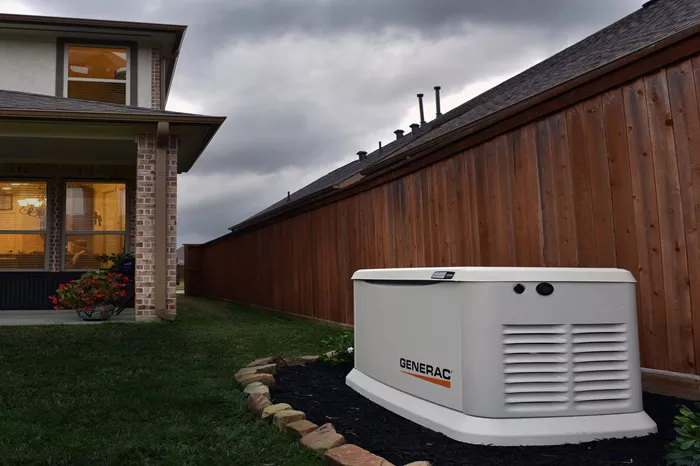A home generator is a backup power system that provides electricity during outages, ensuring that essential appliances and systems continue to function. Whether due to storms, grid failures, or scheduled maintenance, power interruptions can disrupt daily life. Home generators automatically or manually supply electricity, keeping lights on, refrigerators running, and heating or cooling systems operational.
Understanding how a home generator works requires knowledge of its key components, power generation principles, and different types of systems available. This article explains the mechanics behind home generators in a simple yet professional manner.
Types of Home Generators
Portable Generators
Portable generators are smaller, mobile units that can power select appliances via extension cords. They typically run on gasoline, propane, or diesel and require manual startup.
Standby Generators
Standby generators are permanently installed outside a home and automatically activate during a power outage. They connect directly to the home’s electrical panel and usually run on natural gas or propane.
Inverter Generators
Inverter generators are a quieter, more efficient type of portable generator that produces clean, stable power suitable for sensitive electronics like laptops and smartphones.
Key Components of a Home Generator
Engine
The engine is the core of the generator, converting fuel (gasoline, diesel, propane, or natural gas) into mechanical energy. The size and power of the engine determine the generator’s output capacity.
Alternator (Generator Head)
The alternator converts mechanical energy from the engine into electrical energy through electromagnetic induction. It consists of a rotor (moving part) and a stator (stationary part) that work together to produce alternating current (AC).
Fuel System
The fuel system stores and delivers fuel to the engine. It includes a fuel tank, pump, filter, and injector (or carburetor). Standby generators often connect to an external fuel source, such as a natural gas line.
Voltage Regulator
This component ensures the generator produces a steady voltage level, preventing fluctuations that could damage connected appliances.
Cooling & Exhaust Systems
Generators generate heat during operation, so they require cooling systems (air or liquid-cooled) to prevent overheating. The exhaust system safely vents combustion gases, such as carbon monoxide, away from living spaces.
Control Panel
The control panel allows users to start, stop, and monitor the generator. Advanced models feature automatic transfer switches (ATS) that detect power outages and switch to generator power without manual intervention.
Battery (For Standby Generators)
Standby generators use a battery to start the engine automatically when the power goes out. The battery is kept charged by the utility power or a built-in charger.
How a Home Generator Produces Electricity
Fuel Combustion
The generator’s engine burns fuel (gasoline, diesel, propane, or natural gas) to create mechanical energy. This process is similar to how a car engine works.
Rotational Energy Generation
The engine spins a crankshaft, which turns the rotor inside the alternator.
Electromagnetic Induction
As the rotor spins, it moves a magnetic field across the stator’s copper windings. This movement induces an electrical current, following Faraday’s Law of Electromagnetic Induction.
Voltage Regulation & Power Distribution
The voltage regulator adjusts the output to a stable level (120V or 240V in most homes). The electricity is then sent to the home’s electrical panel via a transfer switch.
Automatic or Manual Switching
Automatic Transfer Switch (ATS): Detects a power outage, starts the generator, and switches the electrical load within seconds.
Manual Transfer Switch: Requires the homeowner to start the generator and switch the power source manually.
How Standby Generators Automatically Kick In
Standby generators are the most convenient option for homeowners because they operate without human intervention. Here’s how they work:
Power Failure Detection: The ATS continuously monitors the utility power supply.
Engine Startup: When an outage is detected, the ATS signals the generator to start.
Warm-Up Period: The generator runs for a few seconds to stabilize voltage and frequency.
Load Transfer: The ATS disconnects the home from the grid and connects it to the generator.
Continuous Power Supply: The generator runs until utility power is restored, then shuts down automatically.
Safety Considerations for Home Generators
Proper Ventilation
Generators emit carbon monoxide (CO), a deadly gas. Always place portable generators outdoors, away from windows and doors. Standby generators have built-in exhaust systems but should still be installed in well-ventilated areas.
Correct Sizing
An undersized generator may overload and fail, while an oversized one wastes fuel. Calculate your home’s power needs (in watts) before choosing a generator.
Regular Maintenance
- Check oil levels and change periodically.
- Inspect spark plugs and air filters.
- Test the battery (for standby generators).
- Run the generator monthly to ensure functionality.
Proper Electrical Connections
Never plug a portable generator directly into a wall outlet (“backfeeding”), as this can electrocute utility workers. Use a transfer switch or heavy-duty extension cords.
Conclusion
Home generators provide reliable backup power by converting fuel into electricity through an engine and alternator system. Whether using a portable, standby, or inverter generator, understanding their components and operation helps homeowners make informed decisions. Proper installation, maintenance, and safety precautions ensure that a generator operates efficiently when needed most.
By investing in the right generator and following best practices, homeowners can keep their essential appliances running smoothly during unexpected power outages.

